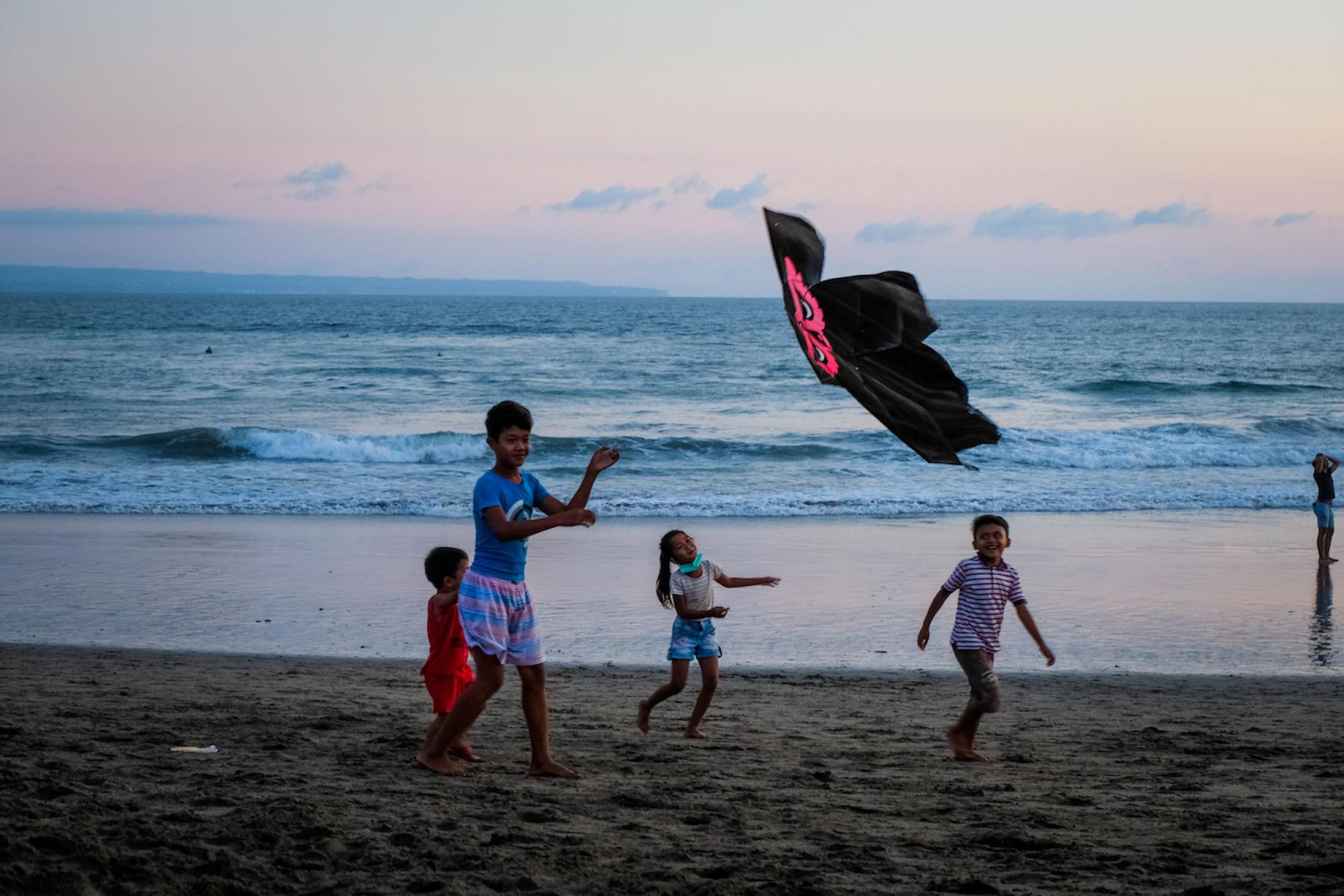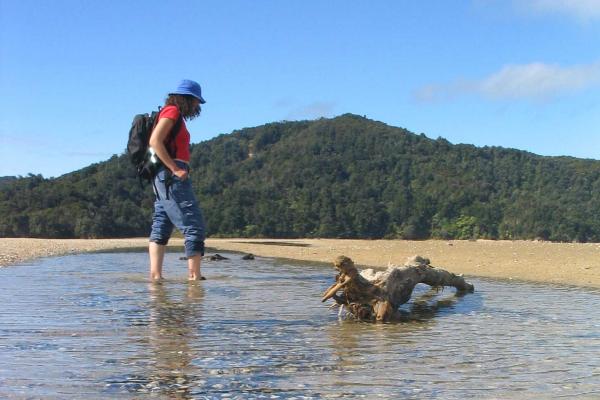Hidden amongst the dive shops of Amed, a town on the eastern coast of Bali, is the storefront of Amed Bali Spa. Massage beds are arranged in neat rows in its tropical garden, and the soft tinkling of Indonesian gamelan music plays in the background. In the ivy-curtained entrance, welcome drinks are placed to entice sunburnt tourists into the cool interior.
But today—much as it’s been since the outbreak of the global pandemic—there’s not a single customer in sight.
For the 10,000 foreign tourists estimated to remain in Bali, the quiet streets are the definition of a perfect vacation. For owner Ibu Wayan, who opened the spa a year ago, they signify economic devastation and endless hardship.
“The tourists that stayed in Bali help us. With just a few customers, we can eat. But it is still very hard,” she says. “Tourism has always supported us.”
Before March, she received a nonstop stream of visitors, thanks to the 6.3 million international tourists that arrived on Bali in 2019, supporting more than half of the economy and contributing IDR 116 trillion (USD $7.8 billion) to the island. Now, she only receives a few guests per day.
Bali has faced crisis before: The 2002 nightclub bombing, the 2003 SARS epidemic, the 2017 eruption of Mount Agung and the 2018 Lombok earthquake. Each caused intense disruption to the Balinese economy and a decline in international arrivals. But each time, tourism largely returned to “business-as-usual” afterwards; mega resorts and hotels refilled, and visitors forgot the disasters that kept them away.
This time though, it’s different. The International Air Transport Association predicts the travel market may take until 2024 to recover. But while the pandemic creates challenges for operators like Wayan, it has also presented an unprecedented opportunity. For years, Bali has been straining under the weight of its tourism industry: it’s been plagued by intense water scarcity, traffic-choked streets, disregard for cultural practices and even a government-declared “garbage emergency.”
With the tourists finally gone home, Balinese communities and policymakers are starting to re-envision the future of their island in a post-pandemic world. It’s a future where tourism isn’t rooted in cheap holiday packages, but in longer, more meaningful stays—and a future where tourism is slower, more sustainable, and less disruptive in both its absence and its presence.
Attracting digital nomads
Kadek Supradi is the owner of D’Uma homestay in Amed. The patios of his four new rooms look out onto rows of freshly harvested sawah. Mount Agung towers, smoking slightly, at the edge of this bounty.
The volcano erupted in 2017, but Supradi believes the economic fallout is worse this time. He tells me that his only guest at the moment is a digital nomad, who uses the room to work remotely. He’s now considering selling the rooms as offices, catering to the location independent.
He’s not alone in his thinking. When lockdown began in March, the tourism landscape shifted overnight from highly transient mass tourism, to remote workers who were living low and slow. More than ever before, people have the ability to work from abroad, a change that may be permanent; according to a 2020 PwC report, over half of employers (55 percent) anticipate that most of their workers will continue to work from home long after COVID-19 is not a concern.
This shift may present an opportunity for the future of Bali’s economy. This is the thinking behind a group of expats and Indonesian activists working to petition the Indonesian government to create a digital nomad visa, similar to those recently launched in Estonia, Bermuda and Barbados.
The visa would grant legal status to remote workers, who currently operate in a grey zone of immigration law (working online with tourist visas) and ultimately make it easier for them to stay in the country long-term. With the government positioning Indonesia as the digital technology hub of Southeast Asia, the proposal is designed as a roadmap for how to do this.
“This is the best time for us to position Bali as the destination for work-life balance, instead of just cheap tourism.”
According to a survey the group conducted, digital nomads in Bali currently make around USD$3,000 a month, spending between USD$250 and USD$1,000 on accommodation and USD$140 and USD$700 on food per month. Beyond Bali, the petition mentions the potential for other areas of Indonesia—part of the government’s “10 New Bali’s” tourism development strategy—to host digital nomads and benefit from this increased spending.
For the group, it’s not just about the money. It’s also about striking a better balance between environmental sustainability and economic growth.
“To me, the middle ground is about capturing a new market of expats who bring skills and experience, and switching from a tourism economy to a digital and creative economy,” says Wahyu Taufiq, a tech entrepreneur and one of the group’s founders. “This is the best time for us to position ourselves as the destination for work-life balance, instead of just cheap tourism.”
The petition has already been presented to government officials in Jakarta to a positive response. As of yet, it is still unclear whether a digital nomad visa will be developed. However, in early November, Indonesia launched an “e-visa”, allowing visitors from a select number of countries to apply for a visa online instead of through an embassy. It's an encouraging sign for visa reform.
Until then, regulations remain uncertain, with borders closed to most international arrivals and more tourists departing the island than arriving. Many believe that it’s time to find another way.
Re-evaluating the reliance on tourism
The abrupt and dramatic decline in tourism in Bali has forced residents who once relied exclusively on tourist dollars to explore alternative ways of making ends meet. Many who worked in the busy nightclubs, restaurants, and hotels of South Bali returned to farms in the north to assist their families in growing food. Some do not see themselves returning.
Fransiska Natalia is a director of the Village Ecotourism Network in Bali, a community-based tourism collaborative supported by the Wisnu Foundation, one of Bali’s oldest environmental NGOs. Natalia believes that tourism will be the last sector to recover from this pandemic. She argues that the government must focus on helping citizens diversify their income strategies while improving health infrastructure for benefit of both visitors and residents
“We work with the villages to teach them that tourism is only a side job,” says Natalia. “They still need to focus on their main job, like growing food.”
She notes that those who live in the most populous and tourism-dependent cities like Denpasar, Kuta and Seminyak have been most affected by the pandemic. There, neighbours have come together to turn empty plots of land into community gardens to grow food. In Nusa Lembongan and Nusa Penida, two popular tourist islands off the coast of Bali, seaweed farming has exploded.
“The price of seaweed is very stable, and it’s used in a lot of products,” explains Natalia. “Overnight in Penida they went from two to 200 seaweed farmers.”
The work of groups like the Village Ecotourism Network supports the notion that tourism cannot “save” Bali, nor should it. Disasters of the past have proven how resilient Balinese people are, with the agency and ability to rise to such challenges time and again. Ultimately, the pandemic has given Bali an opportunity to reimagine what tourism means to its people, and to understand how it can better serve the needs of communities. A redeveloped tourism industry—one that focuses on quality over quantity—can ensure that it’s people are future-proofed against whatever comes next.
Until then, the beaches are becoming busy once again. This time though, it’s not with international vacation seekers—but rather with domestic travellers from across the Indonesian archipelago seeking a reprieve from city lockdown. Within a month of re-opening at the end of July, arrivals at I Gusti Ngurah Rai Airport reached around 2,300 to 2,500 people per day.
On a Sunday at Berawa beach, locals don their masks and head for sunset in one of Bali’s tourism hotspots, the energy returning after many empty months. Children from Java and Sumatra break away from their families and sprint towards the waves. They toss their kites into the air to join the hundreds that dot the sky in what may be Bali’s busiest kite flying season ever.
Add this article to your reading list





